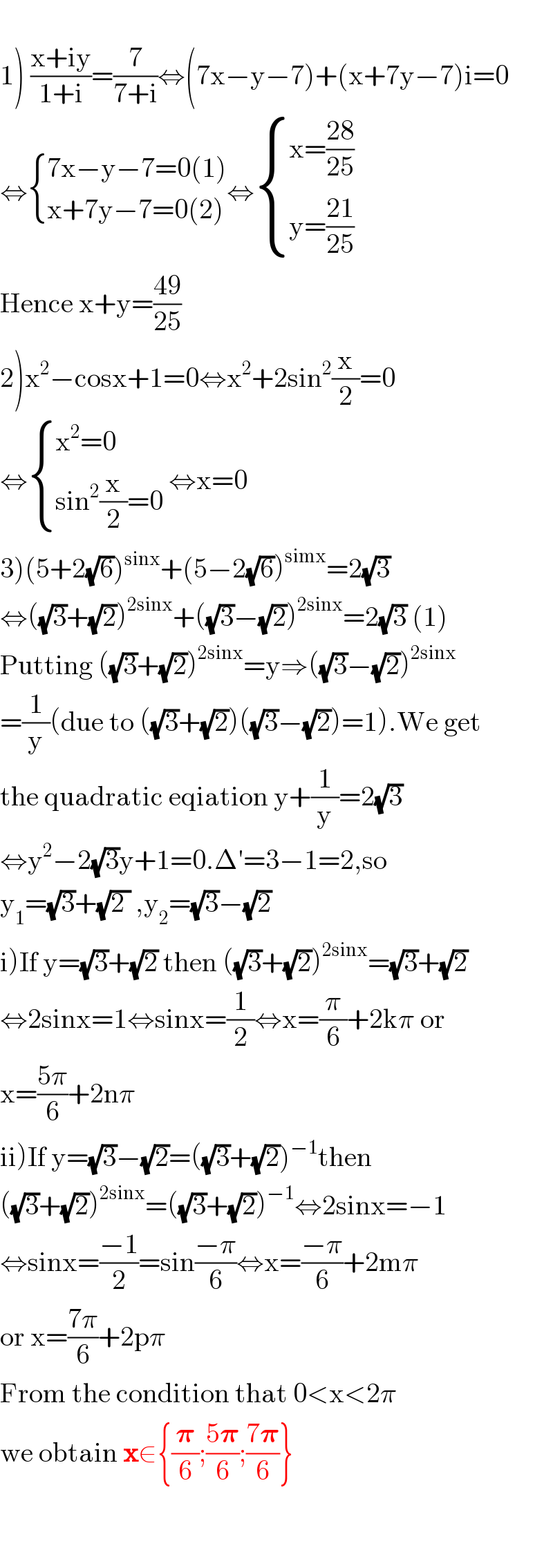
Question and Answers Forum
Question Number 100732 by bemath last updated on 28/Jun/20
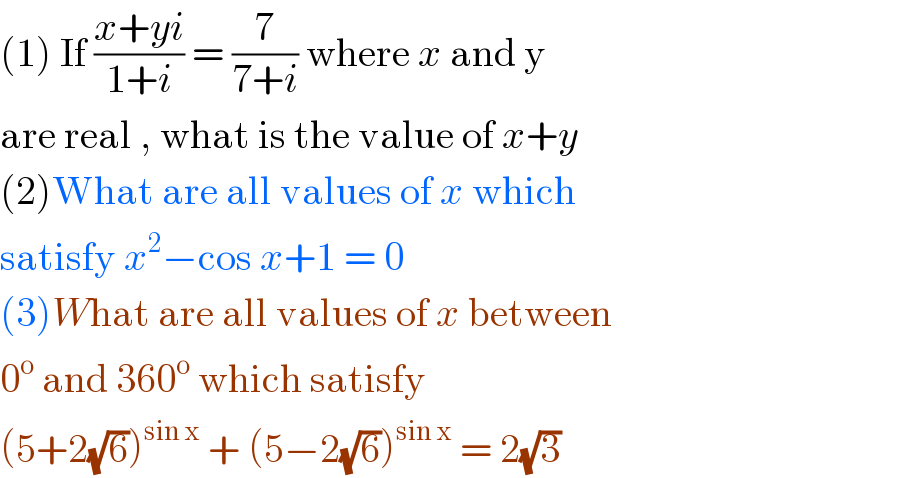
Commented by john santu last updated on 28/Jun/20

Commented by john santu last updated on 28/Jun/20
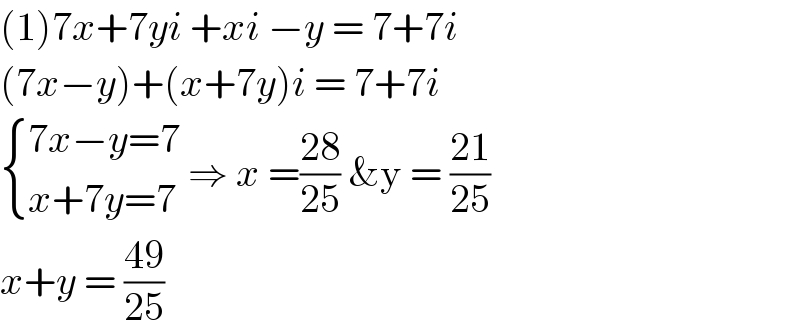
Commented by john santu last updated on 28/Jun/20
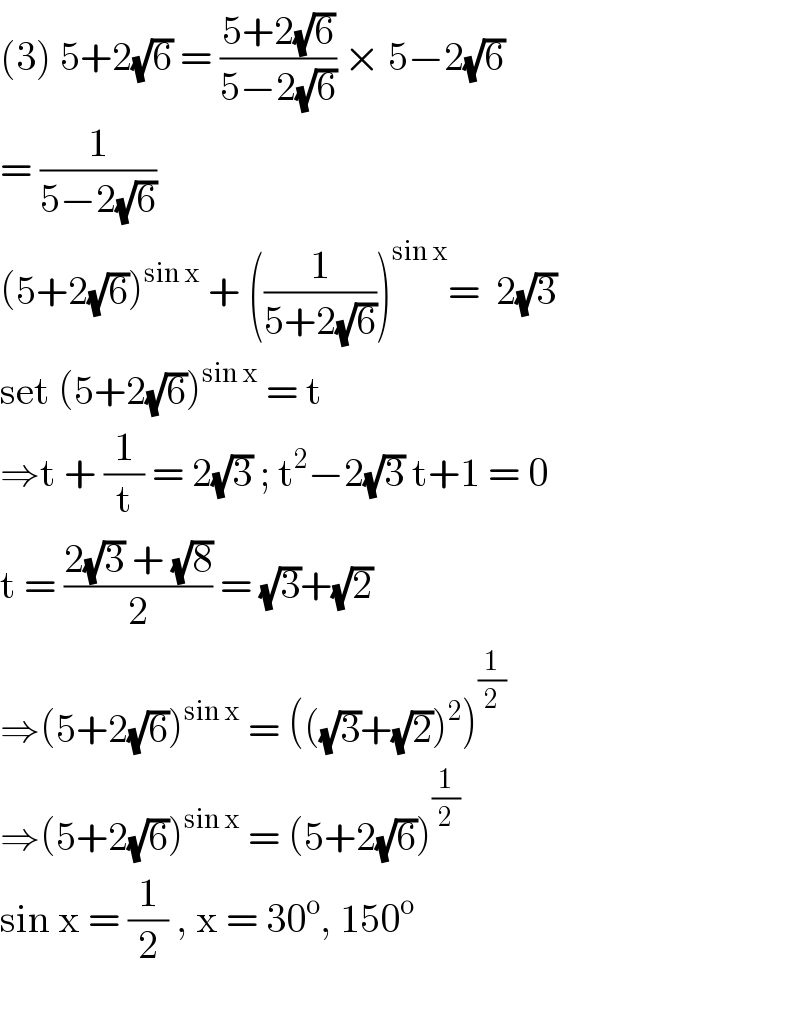
Commented by Dwaipayan Shikari last updated on 28/Jun/20
![(5+2(√6))^(sinx) +(1/((5+2(√6))^(sinx) ))=2(√3) p+(1/p)=2(√3)⇒p^2 −2(√3)p+1=0⇒ p=((2(√3)±(√(12−4)))/2)=(√3)+(√2) or(√3)−(√2) (5+2(√6))^(sinx) =(√3)+(√2) ((√3)+(√2))^(2sinx) =(√3)+(√2)⇒2sinx=1 sinx=(1/2) [x=kπ+(−1)^k (π/6)]{General solution) {k∈Z or x=30° or x=150°](Q100747.png)
Commented by Dwaipayan Shikari last updated on 28/Jun/20
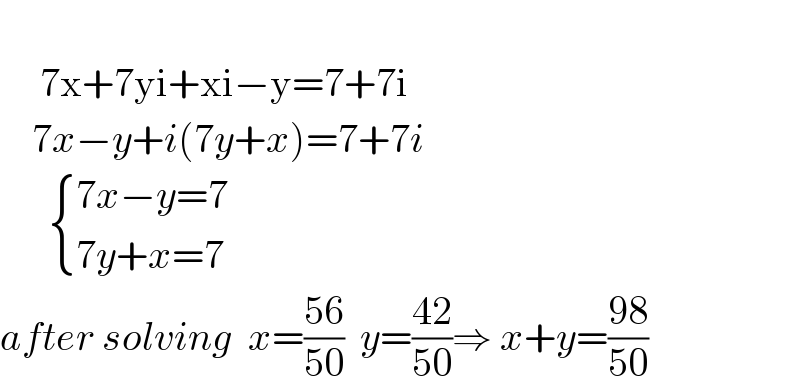
Answered by 1549442205 last updated on 28/Jun/20
